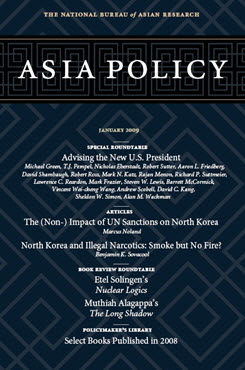North Korea and Illegal Narcotics
Smoke but No Fire?
This article examines the extent to which the North Korean regime has dabbled in the state-sponsored production and distribution of illegal narcotics.
EXECUTIVE SUMMARY
MAIN ARGUMENT
Many U.S. policymakers, including the president and secretary of state, and many within the U.S. media tacitly accept the idea that the North Korean state is an increasingly active drug trafficker and producer of heroin and methamphetamine.
A review of the available evidence, however, shows these claims to be unsupported. The fact that the existing data can hold North Korea responsible for only less than one hundredth of 1% of global narcotics production and the fact that satellite imagery has been unable to confirm any North Korean drug production strongly suggest that the regime receives at most a tepid percentage of its annual revenues from narcotics trafficking.
POLICY IMPLICATIONS
- U.S. policymakers would benefit from decoupling the drug issue from other security issues—such as weapons proliferation and regime collapse—so that targeted security policies could deal with each threat in isolation instead of conflating (and possibly distorting) threats.
- U.S. and Asian counternarcotics operations and strategies could be fine-tuned to address some of the fundamental differences between patterns of North Korean drug production and trafficking and those occurring in Central and Southeast Asia.
- For the community of U.S. analysts and politicians, as well as for many of the major media outlets at large, the characterization of North Korea as a significant illegal narcotics producer and trafficker raises serious questions regarding the way such information is produced and calls for a rethinking of how many in the U.S. understand the North Korean regime.
About Asia Policy
Asia Policy is a peer-reviewed scholarly journal presenting policy-relevant academic research on the Asia-Pacific that draws clear and concise conclusions useful to today’s policymakers. Asia Policy is published quarterly in January, April, July, and October and accepts submissions on a rolling basis. Learn more


